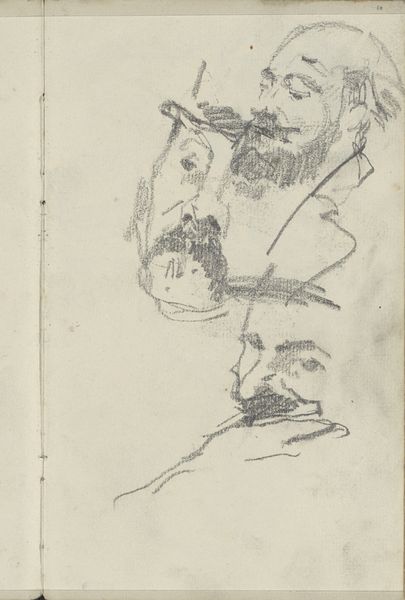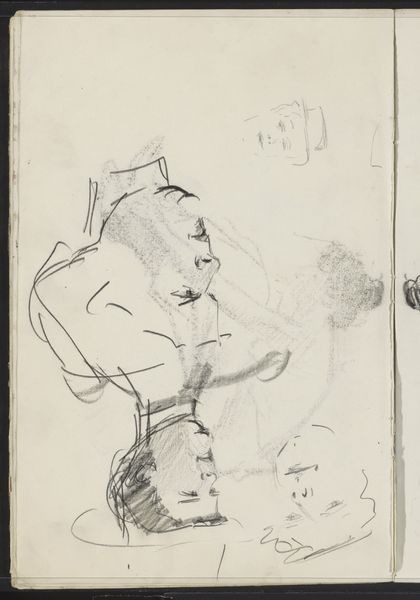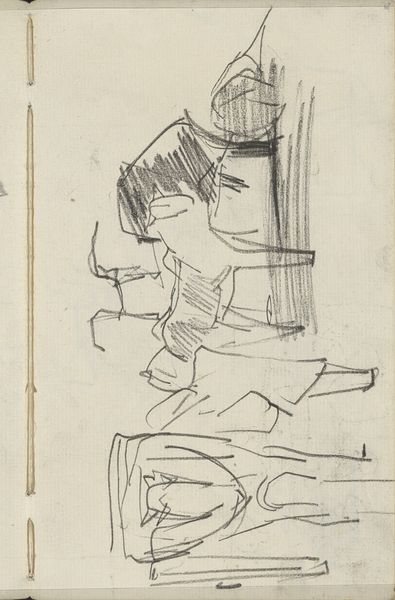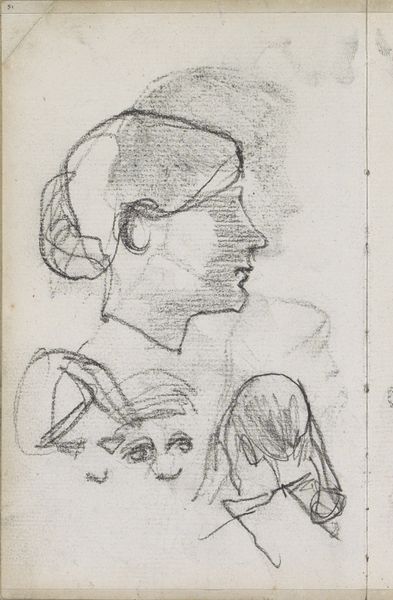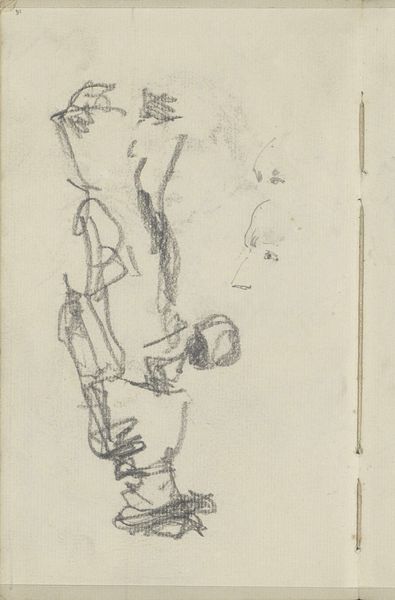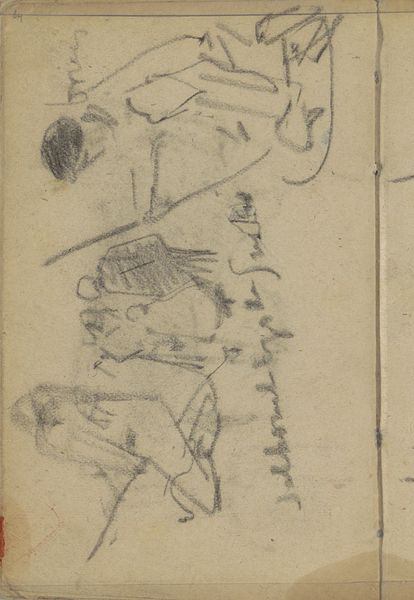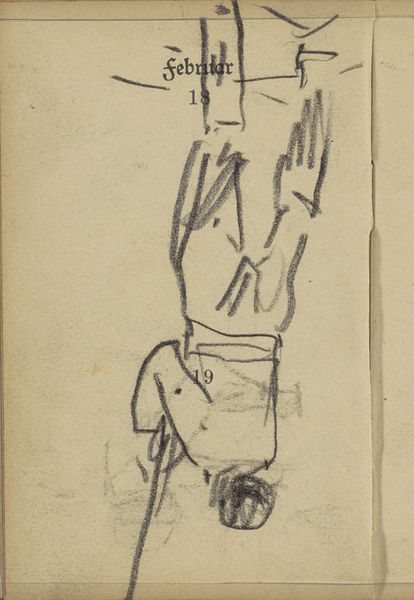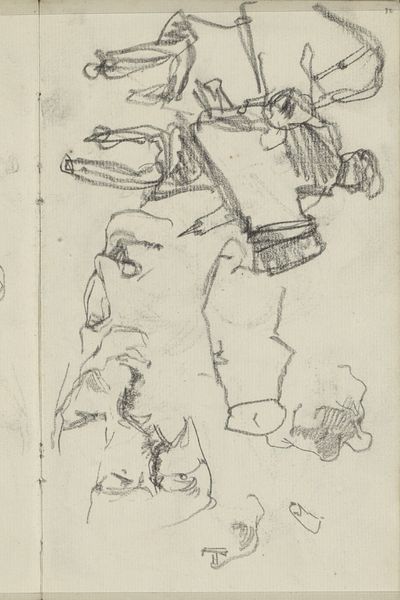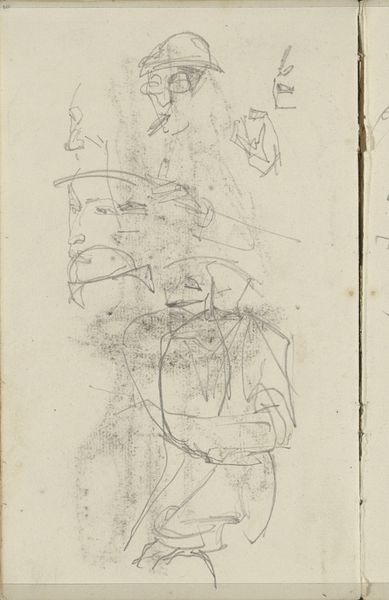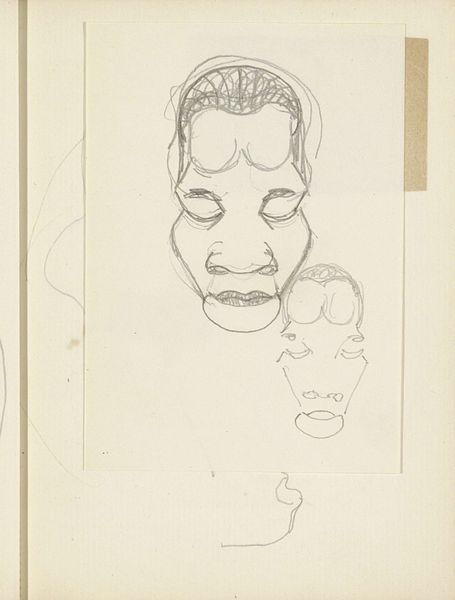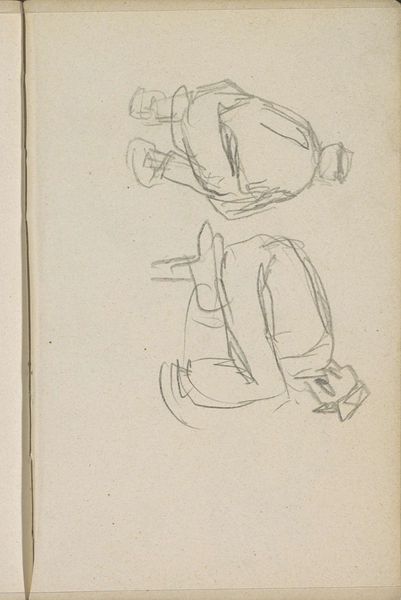
drawing, pencil
#
portrait
#
drawing
#
pencil sketch
#
figuration
#
pencil
#
realism
Copyright: Rijks Museum: Open Domain
Editor: This drawing, "Drie vrouwen en een mannenhoofd" by George Hendrik Breitner, was created between 1884 and 1886. It’s a pencil drawing. It looks like a quick study, but I'm struck by how directly Breitner captures these figures with just a few lines. What can you tell me about this work? Curator: The key here is to examine Breitner's choice of medium and how that connects to the social context. Pencil, inexpensive and easily accessible, becomes a tool for capturing the everyday. It reflects a move away from academic painting and towards a focus on representing the lives of ordinary people. Editor: So, the sketch-like quality isn't just about speed; it's a deliberate choice? Curator: Exactly. Consider the labor involved. Unlike commissioned portraits that cater to bourgeois taste, this sketch possesses a gritty realism. The immediacy and the “raw” quality afforded by the pencil allows him to mass-produce these observations and challenges that established hierarchy between high art and "low" craft. How do you think that decision affected his audience? Editor: I hadn’t considered it that way, focusing on the access to art through production, as opposed to consumption. I’m just used to viewing drawings as steps toward a finished piece, not necessarily complete works. Curator: Precisely, it disrupts expectations, highlighting process over product. By showcasing the "means" of making, Breitner reveals his intention: it's less about polished beauty and more about revealing a certain social reality through readily available tools. Editor: That makes me appreciate Breitner’s intentions even more; thinking of the material circumstances is incredibly important. Curator: Absolutely, by understanding the materials and their social context, we gain deeper insights. This allows us to critically re-evaluate the artwork, shifting focus from individual talent to the economic forces shaping artistic creation.
Comments
No comments
Be the first to comment and join the conversation on the ultimate creative platform.
